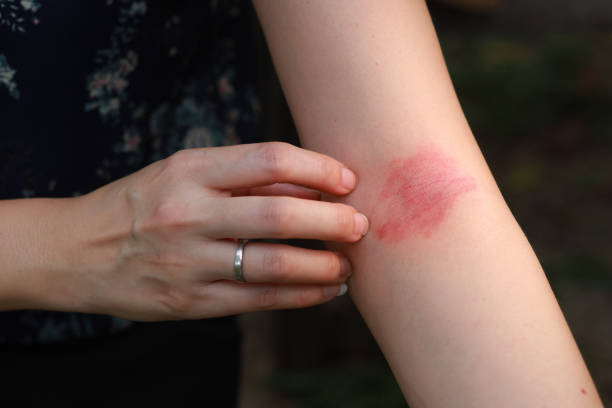Psoriatic disease, which includes psoriasis and psoriatic arthritis, is a chronic inflammatory condition that affects millions of people worldwide. Psoriasis primarily impacts the skin, causing red, scaly patches, while psoriatic arthritis leads to joint pain, stiffness, and swelling. Although there are numerous treatment options available, older adults with psoriatic disease face unique challenges, particularly an increased risk of serious infections due to both the disease itself and the immunosuppressive effects of many systemic therapies.
A recent study conducted by researchers from the Department of Medicine at the University of Toronto, Women’s College Hospital, and collaborating institutions provides new insights into how different systemic treatments affect infection risk in older adults. Their findings, published in JAMA Dermatology, suggest that biologic therapies targeting interleukin (IL)-12, IL-23, or IL-17 may offer a significant safety advantage over other commonly used treatments, reducing the risk of serious infections in this vulnerable population.
Examining Systemic Therapies and Infection Risk
The study, titled Systemic Therapies for Psoriatic Disease and Serious Infections in Older Adults, was a large-scale cohort study analyzing real-world patient data. Researchers examined Ontario residents aged 66 and older who began systemic treatment for psoriatic disease between April 2002 and January 2021. A total of 11,641 individuals were included in the analysis, making this one of the most comprehensive studies on the topic.
To assess the impact of different medications on infection risk, researchers used population-based health data to track hospitalizations due to infections. They applied sophisticated statistical models, including Andersen-Gill recurrent event regression, to analyze the time-varying use of five major categories of systemic treatments:
- Older systemic drugs
- Methotrexate
- Biologic therapies (further divided into IL-12/IL-23/IL-17 inhibitors and anti-TNF biologics)
- Tofacitinib, a Janus kinase (JAK) inhibitor
Each of these therapies works through distinct mechanisms to suppress the immune system and control inflammation, but their effects on infection risk vary.
Key Findings: Biologics Offer a Safer Alternative
The study’s results revealed a clear distinction in infection risk among different treatment options. The researchers found that biologic therapies targeting IL-12, IL-23, and IL-17 were associated with a 35% lower rate of serious infections compared to other treatments. Specifically, patients receiving these biologics had a relative risk (RR) of 0.65 (95% confidence interval: 0.48–0.88), indicating a statistically significant reduction in serious infections.
In contrast, anti-TNF biologics, which include commonly used drugs such as adalimumab, etanercept, and infliximab, did not show a significant difference in infection risk (RR: 0.87, 95% CI: 0.69–1.10). This suggests that while these therapies are effective for psoriatic disease, they may not provide the same safety benefits as IL-targeting biologics when it comes to infection risk.
Comparing Infection Rates Across Treatments
When looking at infection rates per 100 person-years, the findings further emphasized the safety advantage of IL-targeting biologics. Patients on these newer biologic therapies experienced only 1.4 serious infections per 100 person-years, a notably lower rate compared to other treatment options:
- Anti-TNF biologics: 2.2 infections per 100 person-years
- Methotrexate: 2.5 infections per 100 person-years
- Older systemic drugs: 2.7 infections per 100 person-years
Among all the medications studied, tofacitinib, a JAK inhibitor, posed the highest risk. Patients taking tofacitinib had an infection rate of 8.9 per 100 person-years and faced a nearly threefold increased risk of serious infections (RR: 2.89, 95% CI: 1.14–7.34) compared to those not taking the drug. These findings align with existing safety concerns, as the U.S. Food and Drug Administration (FDA) has previously issued boxed warnings about the increased risk of infections associated with JAK inhibitors.
Clinical Implications and Future Considerations
The study’s findings have significant implications for the treatment of psoriatic disease in older adults. Given that aging individuals often have weakened immune systems and are more susceptible to infections, choosing a safer systemic therapy is crucial. The data suggest that IL-12, IL-23, and IL-17 inhibitors may be preferable options for older adults who require systemic treatment but are at high risk of infection.
These findings may also influence clinical guidelines and formulary policies, encouraging healthcare providers to consider infection risk as a critical factor when selecting treatments for older patients. While methotrexate and anti-TNF biologics remain widely used, clinicians may increasingly turn to IL-targeting biologics for their favorable safety profile in this demographic.
Despite the promising results, further research is needed to explore long-term safety, cost-effectiveness, and the potential for combination therapies. As personalized medicine continues to evolve, identifying the optimal treatment strategy for each patient will be essential to balancing disease control with infection risk mitigation.
A Safer Future for Older Adults with Psoriatic Disease
This study marks a major step forward in understanding how different systemic therapies impact the health of older adults with psoriatic disease. By demonstrating that IL-12, IL-23, and IL-17 inhibitors offer a lower risk of serious infections, the research provides valuable guidance for clinicians and patients navigating treatment decisions.
As the field of dermatology and rheumatology advances, these insights may help shape a safer, more effective approach to managing psoriatic disease in aging populations. With continued research and innovation, the goal of providing safe and effective treatment options for all patients—regardless of age—moves closer to reality.
References: Aaron M. Drucker et al, Systemic Therapies for Psoriatic Disease and Serious Infections in Older Adults, JAMA Dermatology (2025). DOI: 10.1001/jamadermatol.2025.0144
Andrea D. Maderal, Need for Consideration of Patient-Specific Risk Factors in Step Therapy, JAMA Dermatology (2025). DOI: 10.1001/jamadermatol.2025.0141






